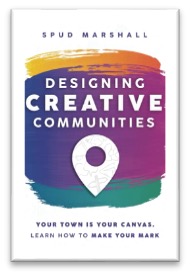Resource Gems:
Enhance Your Students’ Learning with Online Masterclasses
Tim Stephenson
MTNA Business Digest, Volume 2, Issue 3
April 2023
As many of us transition back into in-person instruction, we should consider how to continue to incorporate virtual resources in our lesson plans to benefit our students’ progress. Whether you are looking to supplement your students’ weekly practice experience or are interested in starting your own master class series, below are some great resources for student and teacher, alike!
One thing that music educators learned over the past few years is that online music instruction is not only possible but can enhance students’ learning experiences. A great way to do that is utilizing online master class series!
ArtistWorks.com: Learn from the Masters
ArtistWorks is a digital platform that provides subscribers with access to over 25 hours of lesson materials on nearly any instrument you can imagine! With a monthly subscription fee, students can enroll in courses on specific pieces, instrumental basics, music theory, ear training, improvisation, and more. ArtistWorks is an excellent way to supplement lessons for students and teachers who may be interested in exploring a specific skill that doesn’t make it into the regular weekly lesson time. For a more in-depth learning experience, ArtistWorks uses Video Exchange Learning to track student progress with their hand-picked online instructors.
ArtistWorks: Christie Peery Skousen
An early adopter of ArtistWorks was Christie Peery Skousen, who established the acclaimed Peery method. This method focuses on the relationship between movement and sound and ArtistWorks houses Peery’s comprehensive video library, with hundreds of classical piano lessons for students. Her detailed lesson plans are structured around fundamental, muscular, practical, and musical skills, each with their own series of lessons and certifications at three levels: beginner, intermediate, and advanced. Conveniently outlined in 10- to 15-lesson sequences, teachers can utilize Peery’s masterclass series to hone specific skills that need to be addressed, without interrupting the in-person lesson progress.
Nathan Cole: Method to Mastery
Another excellent resource for string players is LA Phil’s associate concertmaster Nathan Cole’s website. Geared toward advanced students looking to hone their skills, Cole’s courses include extensive materials for virtuosic fundamentals, scales, audition prep and more. Creatively structured to provide an engaging experience for students, Cole includes sessions on the violin greats, virtual studio classes, basic techniques, repertoire, mock auditions, special topics with guests and alumni, and so much more. In addition, Cole’s website features his monthly blog/vlog on violin topics and access to his podcast “Stand Partners for Life” with his wife LA Phil assistant concertmaster Akiko Tarumoto.
Looking for a good read?
Wei-Yuh Christina Xie, NCTM
Designing Creative Communities: Your Town Is Your Canvas. Learn How to Make Your Mark, by Spud Marshall

Designing Creative Communities is not just a book about building communities, it is a guide for all of us who wish to contribute to and have a positive impact on our own community. Reading through the lens of an arts advocate, I see this book as offering creative insights to communities of any size or shared interest, from an independent studio to a local music program, a state arts council, or a national music organization.
Read more.
Marshall had a vision to make the town of State College (the home of Penn State University’s main campus) a better place to live, a place where young people would want to stay after finishing their schooling. He envisioned his town as an inviting place for artists, poets, musicians, dancers, and performers from all areas. I was constantly struck by his persistence and passion for turning ideas into projects; he includes stories from his own and his friends’ experiences, both when successful and when not as effective.
The author uses the term “CANVAS framework” to provide step-by-step suggestions based on his practical experimentation over a decade of community building experience. CANVAS has six steps: Chart your path. Ask probing questions. Name early adopters. Visualize a prototype. Articulate your story. Sustain efforts with partners. The CANVAS framework serves as his roadmap to success.
Each chapter starts with a personal anecdote. For example, he tells of one initial gathering that extended to monthly potluck brainstorming discussions. These monthly potlucks enabled connection and communication with people from the community through casual conversation (as well as more organized discussions) over food. Regardless of the format, the important takeaway is to find each person’s style of communication and then spark a more personal connection, whether over a coffee or even a phone call. He reminds us that email doesn’t always give the personal touch it may take to establish a true connection.
The story I liked the most was when Marshall was invited to renovate two libraries in a rural school district in central Pennsylvania. Instead of bringing his team of experts to design what they thought would be best for the local teachers and students, Marshall turned the focus onto the target audience and had them express what they wanted in the new libraries. Teachers and students generally agreed, with one exception. The students wanted to put a slide inside the library! I won’t go into detail here, but there were assumptions from ‘experts,’ disagreements, discussions, and surprising solutions. While it didn’t go as planned because of external factors, the team found an alternative way to acknowledge the students’ creativity and reasoning. I believe the students who were part of the process will remember that their new ideas and creativity were treated seriously, encouraged, and heard. As Marshall states, “People crave opportunities to engage and be heard.” He emphasized the importance of giving people what they need, not what we think they need.
As we think of ways to recruit and retain members in our local/state/national music teachers associations, we are actually thinking of ways to build our creative community. As independent music teachers, our private studios or local music/arts schools are also hubs for creative minds. Designing Creative Communities is therefore a wonderful tool to assist us in our efforts to bring the arts to an even higher position of importance within our communities.

Tim Stephenson
is a pianist, teacher and administrator on staff at the Indianapolis Symphony Orchestra and on faculty at Pacific Piano School. Tim is currently a doctoral candidate at IU’s Jacobs School of Music.

Wei-Yuh Christina Xie, NCTM, is an independent piano and theory teacher and accompanist. She holds degrees from the Manhattan School of Music and the University of Illinois.